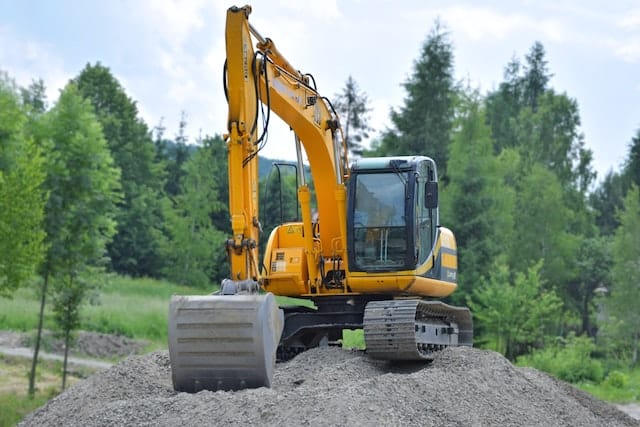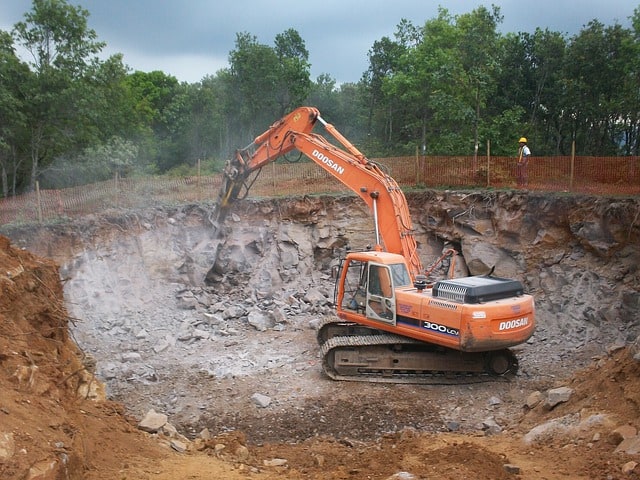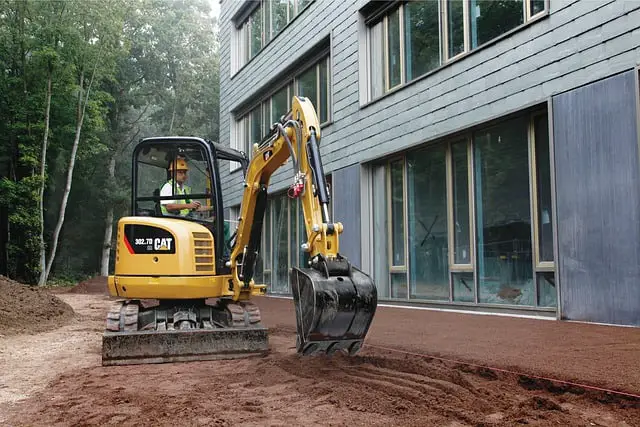Digging is a very common activity among gardeners. Sometimes you might need to dig so deep, especially for re-planting large plants, setting up garden ponds, fences, garden posts, and more.
Interestingly, mini excavators are powerful enough to do the digging. Owing to the need to dig deeper, you might be wondering how deep a mini excavator can dig. Here’s what you should know.
How Deep Can a Mini Excavator Dig

A mini excavator of about 3000–4000 lbs. can dig to a depth of approximately 8 ft. Moreover, if they are as heavy as 7000–10,000 lbs, they can dig holes that are as deep as 10 feet. Additionally, a mini excavator can dig up to 15. ft if it has more tonnage – over 5 tons (10,000 lbs).
Not only do mini excavators differ in size, but also their features and specifications. Some excavators are built in certain ways to suit particular digging tasks better than others.
Knowing these specifications can help you match a mini excavator with the kind of work you need to pull off.
What are the things to look out for before choosing a mini excavator?
Keep reading below!
5 Things To Consider When Choosing a Mini Excavator for Digging
1. Digging Depth

Before you decide on the mini excavator to use for digging, a major thing to look out for is the digging depth the machine provides. For a deeper hole, you would want a mini excavator that can dig deeper into the soil.
However, if the task you want to carry out doesn’t require much depth, then even the smaller mini excavators can handle the job. These kinds of mini excavators normally have less weight and are more compact.
2. Operating Weight
This determines the lifting capacity of a mini excavator while considering the radius and height of the lift. In other words, the kind of task and the weight of the load you’ll be lifting while digging rely on the operating weight range of the mini excavator.
If a mini excavator has a maximum operating weight of 5 tons, the load it can carry at the end of the boom can only be about 5 tons or less. Hence, before you decide on the mini excavator to use for digging, check to see if the operating weight will fit the task.
It’s easy to know the minimum and minimum operating weight of the excavator from the excavator’s information plate. Operating weight equally determines the impact the excavator will have on the ground as well as the pressure it will apply.
3. Swing
If you plan on working in a small space, which is common in gardens, you need to take note of the excavator’s swing. A swing refers to the amount of space required for an excavator to move about.
Hence, you should use a reduced or zero “boom and tail” swing mini excavator if you’ll be digging in a more compact area. A zero tail swing doesn’t allow the mini excavator’s housing to extend beyond the vehicle tracks.
A reduced swing will only extend a few inches. Whichever one you choose, the excavator will work in small spaces without smashing things around it.
4. Reach
This describes how far the mini excavator can reach while it remains at the same level as the surface of the earth. Mini excavators with longer reach have arms that can extend up to 20 ft.
Regardless of the kind of task you want to pull off, you can remain on ground level and in one spot while reaching greater depths and distances.
This comes in very handy when you want to dump soil you dig some feet away from your digging spot.
Moreover, an excavator’s reach helps in tasks where you have to dig and refill another hole nearby. What’s interesting is that there will be no need to move so much.
5. Bucket Breakout Force/Dump Height

This is the maximum force an excavator exerts through the bucket during operations. And when a mini excavator has a higher breakout force, it will dig and lift more.
It also determines the height an excavator can lift and dump things. Hence, this is something to consider, especially if you have bigger digging tasks that involve digging and at the same time moving soil about.
Read a related post: Can A Mini Excavator Remove Stumps?
Final Thoughts
To sum up, mini excavators can dig about 8 ft. up to 15 ft. depending on the size of the machine. These mini diggers make digging easier and they come in very handy in the garden.
Moreover, it’s way easier to use in your garden for bigger digging tasks other than shovels, which require a lot of labor. And mini excavators can dig deeper and equally save you time.
Now that you know that mini excavators pack powerful power to get your digging jobs done, go ahead and choose one that best fits the task.
Remember to take into consideration the digging depth, reach, bucket capacity, and weight of the mini digger you decide to use.
Frequently Asked Questions
How Far Does a Mini Excavator Reach?
At ground level, a standard-size mini excavator can reach about 12-20 feet. This range means some models have longer arms for more reach than others.
In addition, this reach allows a mini excavator to extend to greater heights and distances. What’s more, with a good reach, a mini excavator can dig up grounds far away from it while remaining in one spot.
How Deep Can a 5-Ton Digger Dig?
A 5-ton mini excavator can dig holes of about 13 feet (4 meters) depth. This size of mini excavator is considered to be a mid-ranged mini excavator with a size, about 2m wide.
However, it’s still ideal for tight-fitting jobs and provides one of the deepest depths a mini excavator can dig. A 5-ton mini excavator might be large, about 2 m wide, compared to its smaller counterparts.
However, due to its short tail radius, it’s still considered a compact excavator.
Can I Dig a Pond With a Mini Excavator?
Yes, you can dig a pond with a mini excavator, especially small-sized personal garden ponds that are normally about 2-4 ft. It’ll do the job perfectly well!
Nevertheless, if you plan to dig a pond that’s over 14 ft. deep, it’s advisable to use standard excavators rather than mini ones.

Hey, I’m Lisa and I’ve been an avid gardener for over 30 years. I love writing, talking and living in the garden! Feel free to connect with me on my socials below

